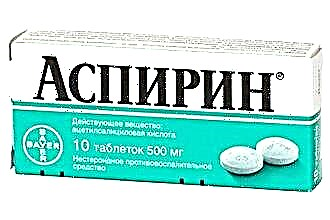Cleansing your ears is an integral part of your baby's hygiene. Just like adults, children produce sulfur, a special secret that plays an important role in protecting the ear from external factors. If a large amount of sulfur has accumulated, it becomes noticeable upon external examination of the ear. Excess sulfur emissions should be removed as they can turn into plugs.
It is known that doctors strictly forbid cleaning a child's ears with pointed objects such as matches. Even cotton swabs, often called “ear buds,” are not suitable for cleaning the ear canal.
Everyone has heard about how to do it, but not everyone knows how to clean the ears of children. In this regard, many parents are concerned about the question - how to clean the child's ears correctly? In this article, we will talk about daily care for your baby's ears, as well as removing excess wax and plugs. Learn all about how to properly clean your kids' ears.
What is sulfur for?

Sulfur is a greasy secretion of the sulfur glands that performs a number of functions:
- moisturizing the ear skin;
- cleaning from dust and foreign objects;
- inhibition of the growth of microorganisms - bacteria and fungi;
- preventing water from entering the ear;
- protection against hypothermia of the hearing organs.
These properties are determined by the composition of sulfur - it contains immune proteins, lipids, mineral salts and acids.
Normally, the sulfur gradually moves to the outer edge of the ear canal. The pushing of sulfur outward is facilitated by chewing movements, yawning, and swallowing. This process is called natural ear cleaning.
If sulfur is produced in excess, self-cleaning of the ear may be impaired. In this case, there is a risk of dense sulfur plugs forming.
The presence of a sulfur plug in the ear canal reduces hearing, impairs coordination, and causes a headache. Children suffering from ear plugs cough for no reason, often tug at their ears.
Causes of sulfur hypersecretion
Excessive sulfur production in a child may be due to genetic causes. In some people, the ear canals are too narrow and convoluted, which interferes with natural self-cleaning. As a result sulfur does not move to the outer edge of the ear canal, but accumulates in it, gradually hardening.
sulfur does not move to the outer edge of the ear canal, but accumulates in it, gradually hardening.
Earwax in children is formed especially actively against the background of diseases of the middle ear, nasopharynx and paranasal sinuses.
However, in most cases, overactive sulfur glands are associated with frequent skin irritation of the auricles.
Using cotton swabs to cleanse your ear can achieve the opposite effect. Cotton swabs not only irritate the skin by stimulating the activity of the sulfur glands, but also push the sulfur deep into the ear, tamping it down. Ultimately, this accelerates the formation of sulfur plugs.
Daily care rules
As we have already found out, sulfur has protective functions, therefore, it should not be completely removed. You need to wash off a ring of sulfur around the outer edge of the ear canal. This sulfur is brown in color and has a dense consistency. How to properly clean your child's ears from this accumulation of sulfur? This can be done by washing your ears with warm, soapy water. You can wash your ears with your fingers, but do not use delicate objects such as cotton swabs. There is usually not a lot of sulfuric discharge in the depths of the auricle, so there is no need to try to penetrate deeper.
How to clean the ears of a child aged 1-3? Babies' ears are also washed with soapy water. You should not thoroughly wash them at this age every day - it is enough to monitor the cleanliness of the auricles, periodically (about 1 time per week) cleaning them. After washing, the ears are gently wiped off with a towel or napkin.
Water entering the ear canal is fraught with hypothermia and the development of otitis media - inflammation of the middle ear. In addition, frequent maceration (i.e., skin soaking) is another factor that predisposes to sulfur hypersecretion.
Removal of excess sulfur
Parents need to understand that the harm done to a child by over-cleaning the ears far outweighs the potential for excess sulfur. Sulfur in a child's ears is not as dangerous as it is commonly believed, but its complete absence often leads to frequent ear colds and fungal infections of the outer ear. In addition, if the child's ears are not cleaned correctly, there is a great risk of disrupting the integrity of the eardrum. 
Often, during the procedure for extracting sulfur with cotton swabs, the child is capricious, breaks loose, and can run away with a cotton swab in his ear. Otolaryngologists are often faced with cases of damage to the tympanic membrane with a cotton swab in pediatric patients. Perforation can cause permanent hearing loss. So is the absolute purity worth the risk? We recommend that you read about how to withdraw money from the Volcano casino on this page http://playlotteries.ru/casinos/kak-vyvesti-dengi-s-vulkana/ all methods of depositing and withdrawing funds from the Volcano casino.
How can you clean your child's ears if an excess amount of sulfur has accumulated? Many doctors favor the use of cotton swabs with a thickened tip that prevents the swab from being inserted too deeply. These sticks can be used to clean the ears of a child both at the age of 1-2 years and at an older age. With their help, it is convenient to remove sulfur masses that accumulate behind the tragus. However, using them too often is not recommended (to avoid irritation of the ear canal).
In cases where the child is uncomfortable with sulfur, it is best to use a method approved by most ENT doctors. This is the cleansing of the ear canal with 3% hydrogen peroxide.
In contact with the sulfur mass, peroxide releases many oxygen bubbles. As a result, the sulfur dissolves and easily escapes.
In this way, you can clean the ears of a child aged 1-3 years (and older) from both sulfur and traffic jams. For prophylactic cleansing, one procedure is enough, and for dissolving the cork - 3-5 procedures.
Today in pharmacies you can find modern means for dissolving corks. They usually work like peroxide, but are more effective. Such solutions can be used at home, strictly following the instructions.
There is also a method for cleansing the ears using special wax candles. Most doctors consider this method unsafe and do not recommend it, especially for children.



